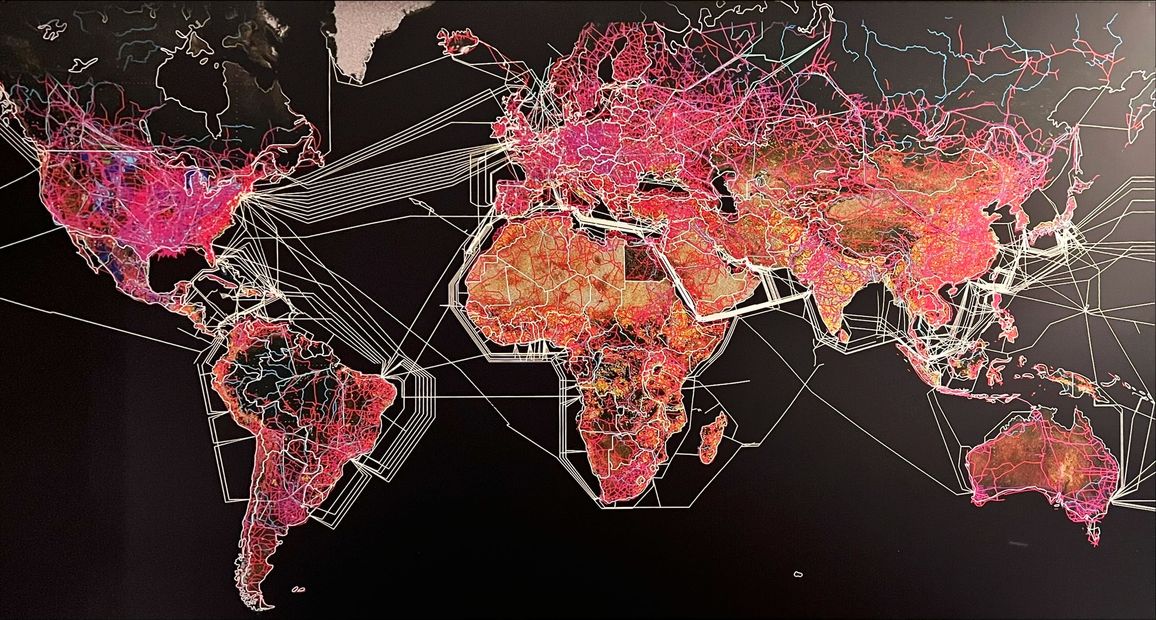February 2023 Highlights: Taiwanese Tech Giants, Solana Global Expansion, Digital Map-Making & Experience Management

Moving into February 2023 where we dive deep into the expansion stories of the Solana Foundation, HERE Technologies, and Qualtrics in the Asia Pacific, and understand how the tech giants from Taiwan (TSMC, Foxconn, UMC, and Asus) and China (Huawei, SMIC and YMTC) navigate the fragile supply chains due to the tech cold war between the United States and China. We break down the key highlights and recommend key reports that dominate the Asia Pacific for Feb 2023.
Please promote us to your friends by forwarding our newsletter to them so that they can subscribe to our youtube channel or our newsletter. This will help Analyse Asia move towards a sustainable model.
How TSMC and Foxconn navigate the fragile supply chain with Tim Culpan from Bloomberg
Key Takeaways:
- Tim estimated that Warren Buffett left USD$1B profits on the table after exiting his position from TSMC with the sale of 50-51 American depository receipts (ADRs), where the stock climbed up by 30% between Dec 2023 and Feb 2023, based on the rationale that Berkshire Hathaway needs to report on their holdings every quarter. He pointed out that Warren Buffett prefers Apple over its supplier, which in this case, TSMC.
- The best strategy to beat TSMC in the manufacturing of semiconductors is to develop each semiconductor node with a different approach in the hope to leapfrog the incumbent players such as TSMC and Intel instead of chasing the previous nodes by doing the same thing over and over again. Of course, the disruptive technology is quantum computing on the horizon but the first qubit in physical manifestation has not been miniaturized yet.
- Tim looked at the realistic scenario for how much semiconductor manufacturing in TSMC can be diversified. Even if TSMC or Intel managed to build more giga-factories in semiconductor manufacturing in the United States due to the CHIPS act or other parts of the world, it would only take away most 10% of the global semiconductor manufacturing that is currently centralized in Taiwan.
The rumours of Solana's demise are greatly exaggerated & the developers' activity is increasing internationally with Akshay BD
Key Takeaways:
- Akshay broke down the go-to-market strategy to build developer communities for a blockchain protocol such as Solana: by targeting the top 1% of the developers' community with the approach: learn, earn, and build. First, the blockchain protocol focused on helping developers to learn about their technology development framework. For example, developers need to learn the programming language Rust for Solana. Then the developers earn by taking on projects provided by the Solana foundation and other projects within Solana seeking to find talent. Finally, when they become the best developers in the community, they become the builders and originators of new projects within the community. From the top 1%, they escalate downwards to attract new talent on board.
- The interesting insight that Akshay shares are that airline loyalty programs are similar to central banks. He raised the example of Delta Airlines having a market capitalization of US$20.7B but their Sky Miles program was valued at US$26.7B (See this reference for all US airlines). The airline loyalty programs print their currency, find secondary buyers and allow the users to pay other providers such as car rental companies, for example, Hertz, with their airline miles. Essentially, they are not taxed because they are perceived to be customer cash back, but not as a post-purchase earning or as an earning. Hence, there exists an opportunity to make them capital efficient.
- The one thing that Akshay knows about Solana that not many people do, is that it has the highest number of on-chain users or on-chain daily active addresses.
HERE Technologies and the Challenges of Digital Map-Making in Asia Pacific with Jason Jameson
Key Takeaways:
- The global market size for location intelligence in 2022 is close to US$22B and is expected to reach US$50B by 2030. The key is that the applications that access the location intelligence market are growing with their requirements of sub-centimetre resolution maps, for example, autonomous vehicles, supply chain optimization for e-commerce and delivery, and reduction of carbon footprint by transportation.
- The one thing that Jason knows about digital map-making that not many do is that digital map-making is a complex process that requires huge amounts of computing and storage to ingest terabytes of data to do alignment, aggregation, and derivation publication with 900 attributes that sit on the of the map, for example, 3D elevation and geometry.
- Jason shared the customers who are adopting HERE technologies in the Asia Pacific, for example, VinFast, the largest automotive manufacturer in Vietnam, is using HERE's intelligent speed assist map for their European expansion to support driver safety. Other examples include FAW Group in China and DANA group in Indonesia.
Qualtrics and the Business of Experience Management with Brigid Archibald
Key Takeaways:
- Brigid introduced the concept of experience management that every single organization, regardless of the industry can benefit from, and the PWC research on CEOs showed that 40% of them do not believe that they have a sustainable business unless they know what to do next. By focusing the user experience based on changing needs of customers, regulation, and the talent they are trying to attract, the CEOs can find the recommended call to action which will help them to address the gap. The total addressable market for experience management is US$60B.
- The interesting customers in Asia Pacific who are using Qualtrics are the banking institutions such as Standard Chartered and OCBC and different government agencies that used them for disaster recovery. Brigid highlighted how Qualtrircs worked with the Ukraine refugee organizations to deal with the refugee situations caused by the Russian invasion.
- For the Southeast Asia market, Brigid pointed out that US$165B in revenue is at risk due to poor customer experience. Organizations must find out and take action instead of keeping running the business as they run it. After all, insanity is doing the same thing over and over again and expecting a different outcome.
Our Recommendations in Feb 2023:
Digital 2023 Report by Simon Kemp
The annual global report on Digital 2023 by Simon Kemp (@eskimon, LinkedIn) and his team from Kepios with global partners such as We Are Social and Hootsuite is out. Simon Kemp is coming on the next Analyse Asia episode 416 to break down the key observations and debunk the narrative on social media dying and explore the uses of generative AI. The episode will be released in both audio and video formats in early March 2023. We share the top 10 trends, a video made from the report where they highlight the key trends. The report is more than a decade old and Simon has added new data sources which will make this report one of the must-reads for 2023.
Hinderberg Research vs Adani
- Key Event: One of the most-watched events in the Asia Pacific is the recent report entitled "Adani Group: How The World’s 3rd Richest Man Is Pulling The Largest Con In Corporate History" released by Hindenberg Research on the Adani group that led to the massive sell-off of the Adani stocks, leading to a $130B loss in market capitalization for the Adani group and related companies stock. In turn, the Adani group provided their response to the report and of course, the counter-response from Hindenberg as well.
- Key Takeaways: 1/ One curious question which was addressed by the Financial Times was the mechanisms utilized by Hinderberg Research (which requires a subscription to FT) to short the stocks related to the Adani portfolio. 2/ The Indian government has stood behind the Adani enterprises as it was characterized as an attack on the Indian economy by the Adani Group. It is an interesting case study on how conglomerates in the Asia Pacific are being challenged by short sellers from the US and European markets. 3/ The short sellers often do deep investigations and make allegations about the companies from corporate governance to alleged fraud and make use of the media to generate panic while short-selling the stocks of the company they targeted. This is a story which we will continue to monitor and see how it unfolds.
Our Asks:
To build the credibility of the Analyse Asia Podcast, we are building our endorsements page and are starting to build out the page for our 1000 true fans. We need your help to tell the world why the podcast has helped you in understanding the complexities and the critical business, technology & media trends in the Asia Pacific from our unique Asian point of view. Here's how you can send us the endorsement via this email with the following information: 1/ Full name and profile picture (square one with at least 1000x1000 px), 2/ Your designation and company, 3/ Your LinkedIn, Twitter or other relevant social media profiles, 4/ 100-200 words on why you have listened to Analyse Asia. We look forward to your support. We reserve the right to publish any received endorsement as we do not want spam, advertisements or self-promotion on the endorsements page.


